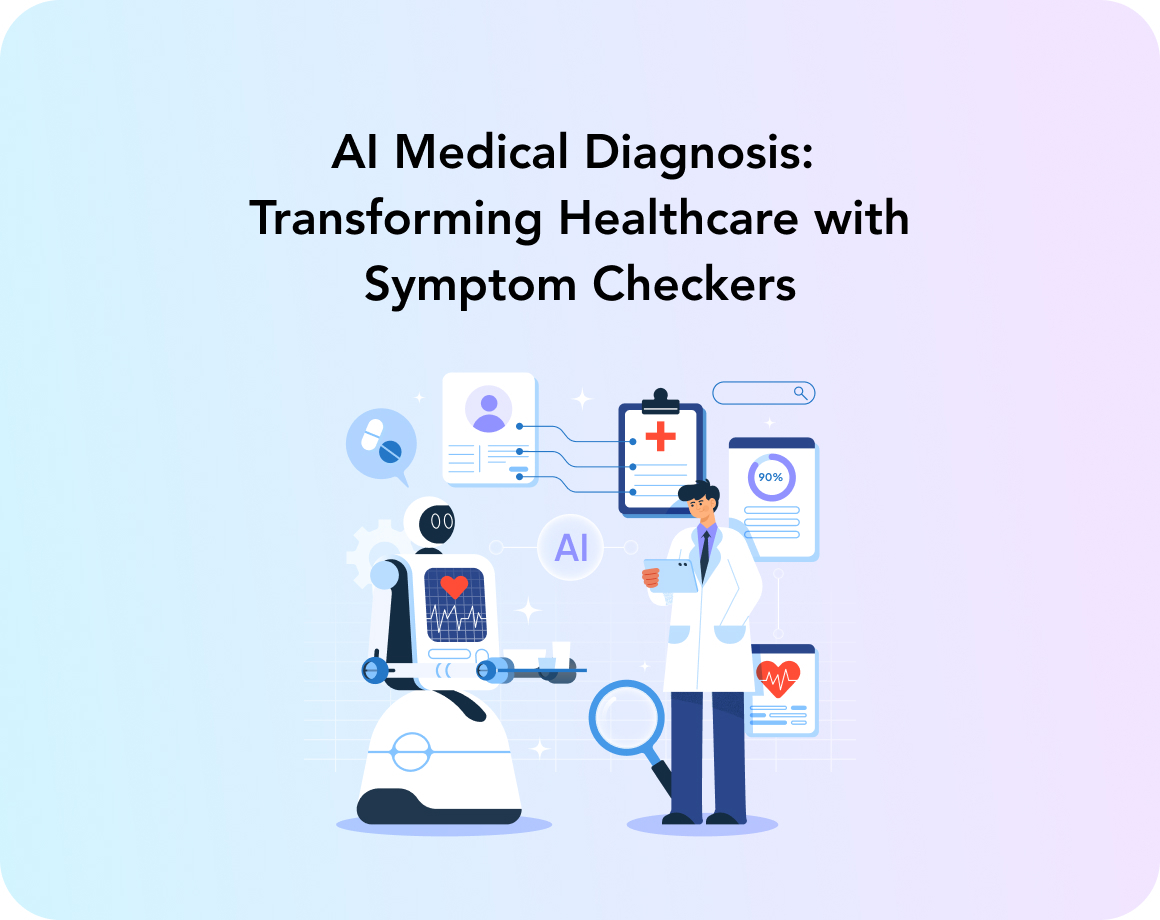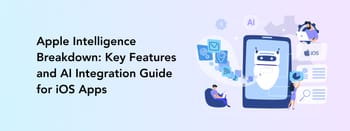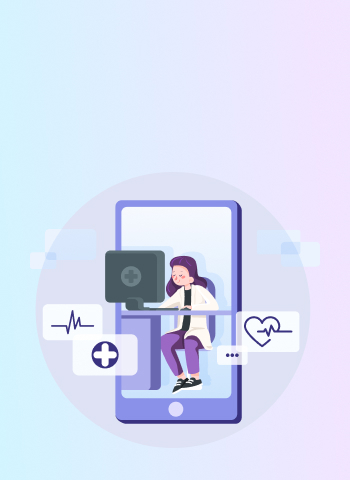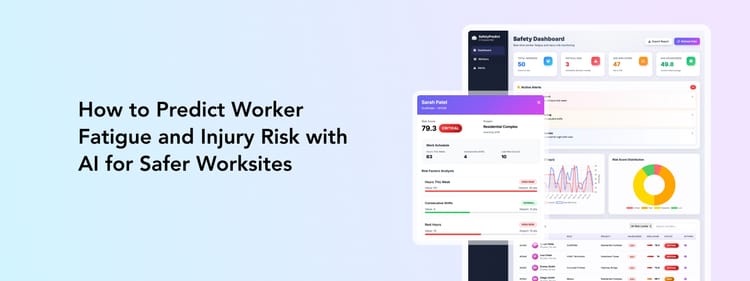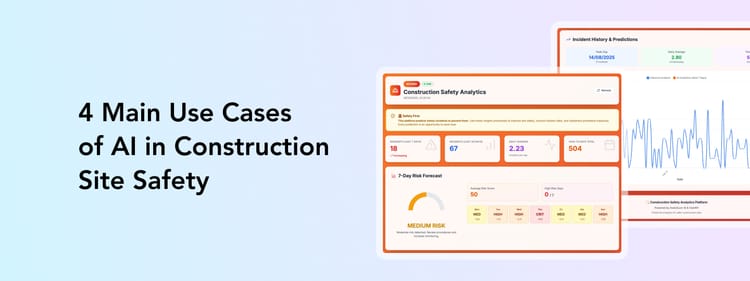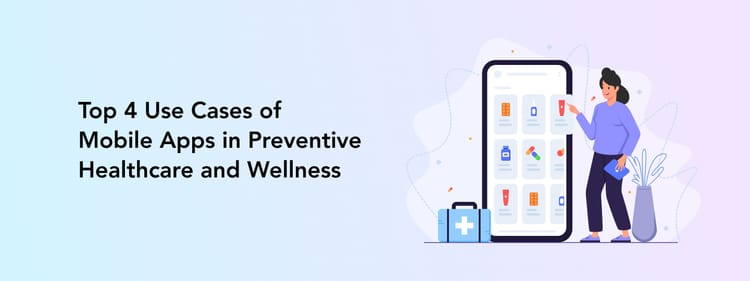Let’s face it: healthcare is not always accessible for patients needing a consultation here and now. A weird rash on the face, mild stomach pain, or a bug bite—such issues are not severe enough to rash into the ER but still bother a person. A medical consultation is a way out—but what if a specialized doctor has an appointment only in two weeks?
Artificial intelligence technology is the answer for many patients who cannot see a doctor due to financial, logistic, or socio-cultural reasons. Healthcare institutions can offer accessible self-diagnostic tools to promote better care and assist their patients even when a doctor can’t see them in person.
How AI is Promoting Patient-Centric Healthcare
Patient-centric healthcare is an innovative alternative to traditional healthcare methods. Instead of burdening doctors and patients with excessive paperwork and bureaucratic procedures, patient-centric healthcare prioritizes individual patient needs and preferences, actively engaging patients in their care process.
AI plays a significant role in bringing patient-centric healthcare forward. One of the main instruments of remote, accessible healthcare is an AI-based symptom checker.
Symptom checkers usually come in the form of a chatbot. It can be an in-browser platform or a mobile app. These are AI-powered tools that let users describe their medical symptoms through a conversational interface.
These tools analyze the information provided to suggest possible diagnoses, recommend next steps in care, and offer triage advice. Symptom checkers make it easier for people to understand their health issues and decide on the best course of action.
AI symptom checkers are transforming healthcare by letting patients take an active role in managing their health. These tools help users understand the severity of their symptoms, decide if they need to visit the ER, book an appointment, or handle their condition with simple remedies like painkillers. They offer a preliminary platform for self-assessment, guiding patients on the best next steps and providing doctors with valuable information, so they can focus more on complex cases.
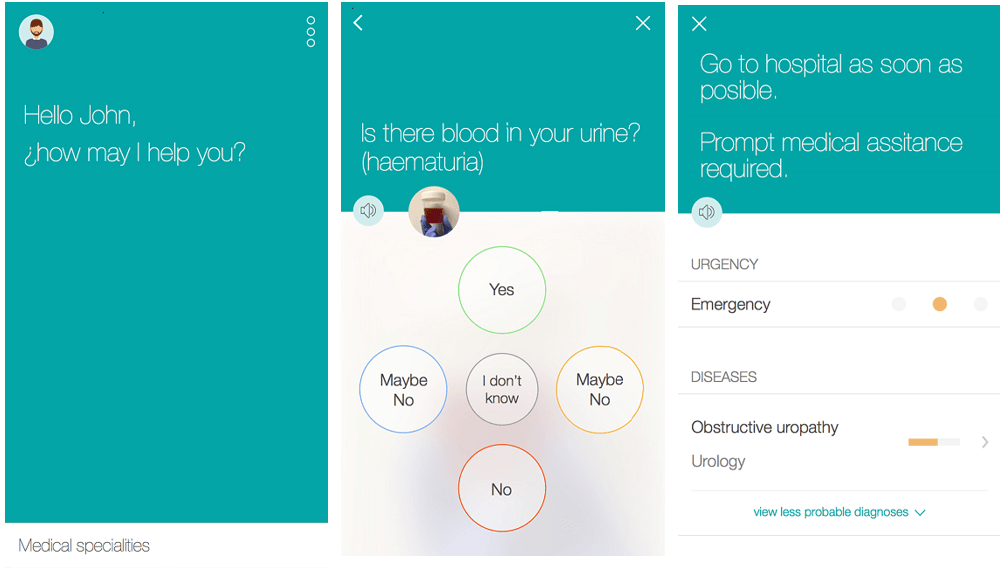
A recent study highlights how both patients and doctors view AI symptom checkers positively. In the study, patients used a chatbot-based symptom checker before their medical visits. This tool not only helped screen for COVID-19 but also gathered detailed medical history relevant to the patient's specific issue. The information was then sent to the GP to aid in the consultation.
The results showed that while most patients had not previously engaged with symptom checkers, those who had regarded them positively. Almost half of the patients and a quarter of the doctors reported being ‘fairly’ or ‘very’ satisfied with the tool. Patients praised the checker’s ease of use, precise questioning, time-saving potential, and capacity to encourage self-reflection. Notably, every second patient expressed a willingness to use the symptom checker at home, seeing it as a way to assess initial health concerns, minimize unnecessary medical visits, and assist their physicians.
Another study found that 49% of patients and 27% of physicians reported being rather or very satisfied with using the symptom checker. Patients frequently cited such parameters they liked as
- ease of use
- precise and comprehensive questions
- time-saving potential
- encouragement of self-reflection
Half of the patients expressed willingness to use the symptom checker at home for initial health assessments to save time, reduce unnecessary visits, and aid their physicians.
Overall, AI-based symptom checkers are helpful for both patients and doctors. While patients can take responsibility for their condition and get advice on whether or not to rush to a hospital, doctors can dedicate time to more severe cases and use the symptom checker data for more precise diagnosis.
How Does AI Symptom Analysis Work?
Simply saying that artificial intelligence is the technology behind automated symptom checker solutions is not enough. AI is a complex technology that includes several approaches, such as machine learning, deep learning, and natural language processing. All of those are used in the AI-enhanced symptom checker platforms.
- Machine Learning (ML): ML uses large datasets of medical information, including symptoms reported by users, corresponding diagnoses, and treatment outcomes. By analyzing these datasets, machine learning algorithms can discern patterns and correlations between symptoms and potential medical conditions. For example, it can learn to identify patterns indicating allergies based on symptoms like sneezing, itching, and watery eyes.
- Natural Language Processing (NLP): NLP techniques empower computers to understand, interpret, and respond to human language. NLP helps interpret user descriptions of symptoms, extract relevant information from text, and provide understandable medical advice through interactive interfaces. NLP considers how users talk in daily life and interprets their messages in terms of the medical context. NLP works behind the scenes to understand the symptoms you describe in everyday language. It can analyze sentences and phrases like "I have a runny nose" and then figure out what medical conditions might be causing those symptoms. NLP recognizes that "runny" in this context describes the flow of mucus from the nose, which is associated with conditions like allergies, colds, or sinus infections.
- Deep Learning (DL): DL, a subset of ML using neural networks with multiple layers, allows computers to recognize intricate patterns and make highly accurate decisions. In symptom checkers, DL can enhance image recognition capabilities for medical images, aiding in the detection of anomalies and providing accurate assessments of symptom severity.
Symptom checkers rely on artificial intelligence, specifically machine learning and natural language processing. Users input their symptoms via a chatbot or online interface, which analyzes the data using machine learning algorithms.
These algorithms compare the symptoms against a vast repository of medical knowledge and patterns derived from extensive datasets. Natural language processing enables the system to interpret and understand user inputs in everyday language, extracting relevant medical information and generating potential diagnoses.
Developers use Large Language Models (LLMs) like GPT-4 to power symptom checkers. These models can be used as-is or further trained on medical data to enhance their diagnostic capabilities.
A Large Language Model (LLM), such as GPT, is a type of artificial intelligence that uses deep learning techniques to understand and generate human-like text based on the input it receives. Developers access these models through an Application Programming Interface (API), which allows integration of the model's capabilities into various applications, including healthcare tools like symptom checkers.
Developers have the option to train an LLM on specific medical datasets to improve its accuracy in diagnosing medical conditions based on symptoms. This training involves exposing the model to extensive medical knowledge and patterns, enabling it to make more precise assessments.
Even without specific medical data training, LLMs like GPT can perform highly accurate symptom analysis. A recent study examined ChatGPT's capabilities for medical diagnosis and showed that while traditional online symptom checkers achieved a 51% accuracy rate, ChatGPT provided the correct diagnosis within its top three suggestions 87% of the time. Moreover, it accurately triaged patients 67% of the time, showcasing its effectiveness even without specialized medical training.
Key Benefits of AI Symptom Checkers
The European Patients' Forum conducted a survey about the benefits patients see in the healthcare AI. They listed the potential of artificial intelligence to improve the accuracy of diagnosis and the positive role of AI in enhancing the quality and efficiency of research and innovation in healthcare.
We have mentioned that AI-based symptom checkers are useful both for patients and medical professionals.
Let’s now get into details and learn what particular benefits AI medical diagnosis tools can bring to the table.
Accessibility for patients
Accessing traditional medical treatment in person can be challenging for many individuals due to various barriers:
- Geographical inaccessibility, such as living in remote areas far from healthcare facilities.
- Transportation limitations, like lack of personal vehicles or public transportation options
- Sociocultural barriers, such as not speaking the language
- Economic constraints, like lack of health insurance or financial resources for medical visits of specific types
- Healthcare system challenges, such as overcrowded hospitals and long wait times for appointments
AI symptom checkers play a crucial role in overcoming these barriers by providing immediate access to health information and guidance. Available 24/7, these tools offer a user-friendly interface that requires no specialized knowledge to operate. They empower users to understand symptoms and assess the urgency of their medical conditions remotely.
By running their symptoms through such a tool, users can understand the severity of their situation and make a decision as to whether to go to the emergency room right away, book an appointment with a doctor later, or get an over-the-counter remedy, Plus, a tool like this can even give suggestion as to which specialist to see.
A recent study highlights the positive impact of AI symptom checkers on healthcare accessibility:
- A significant number of users (76.3%) use AI symptom checkers to better understand their symptoms. Other reasons to open an AI symptom assessment tool are deciding whether to seek care (33.2%) or where, e.g., primary or urgent care (20.7%), obtaining medical advice without going to a doctor (15.8%) and understanding their diagnoses better (12.8%).
- 33.2% of users rely on these tools to determine whether to seek further medical care.
- A whopping 91.4% of users are satisfied with AI symptom checkers and indicate that they would use them for future healthcare needs.
Such feedback proves that patients benefit from early AI-based symptom checks that help make at-home self-care easy and can redirect the users to a professional when needed.
Cost-effectiveness
AI symptom-checkers are proving to be a cost-effective solution for healthcare institutions. By efficiently triaging patients and providing initial assessments, these tools help hospitals and clinics save significant amounts of money. Here’s how:
- Reducing unnecessary admissions: Many patients visit hospitals for minor issues that do not require emergency care. AI symptom-checkers can assess these cases remotely, advising patients on whether they need to seek in-person medical attention or can manage their symptoms at home. This reduces the number of unnecessary admissions, allowing hospitals to allocate resources more effectively.
- Freeing up doctors' time: By handling preliminary assessments, AI tools free up doctors to focus on more severe cases. This not only improves the quality of care for those in critical condition but also increases the overall efficiency of healthcare delivery.
- Cost savings on routine check-ups: For patients who come in for routine check-ups or minor symptoms, AI symptom-checkers can provide guidance and monitoring, reducing the need for frequent hospital visits. This leads to significant savings for healthcare institutions in terms of both time and money.
- Optimizing resource allocation: With AI handling initial diagnostics, hospitals can better manage their resources, ensuring that medical staff, equipment, and facilities are used where they are needed most. This optimization leads to cost reductions and improved patient care.
Accenture predicts that AI applications in clinical health could save the US healthcare system up to $150 billion per year by 2026. It’s clear why – AI technology, including AI symptom checkers, reduces the burden on hospitals by managing minor issues and routine check-ups, allowing doctors to focus on more severe cases and ultimately lowering operational costs.
Accurate referrals for patients
AI symptom checkers do more than suggest possible diagnoses; they also provide recommendations for further care and patient triage. These tools can differentiate between conditions that require varying levels of medical attention.
For example, if a patient logs symptoms related to a bug bite, the AI might suggest self-treatment as sufficient. However, if symptoms indicate a more severe issue, the AI can recommend seeing a dermatologist or even direct the patient to the emergency room if necessary. AI symptom checkers can identify which specialist a patient should see based on their logged symptoms.
Assistance for medical professionals
AI symptom checkers assist medical professionals in several impactful ways:
- Reducing the load for minor issues: AI symptom checkers can handle initial evaluations for minor health concerns, allowing medical professionals to focus on more severe cases. This triage system ensures that doctors have more time and resources for patients who need urgent care.
- Providing comprehensive patient data: AI tools can compile historical and current data on patient symptoms, including previous illnesses, chronic diseases, and logged symptoms. This comprehensive view allows doctors to quickly access all relevant patient information, streamlining the diagnostic process.
Supporting this, a survey found that most health professionals see the value in online symptom checkers for patient triage. They appreciated that these services provide patients with quick contact with health professionals and referrals to appropriate care or self-management instructions regardless of time and place.
Health professionals also value the detailed information provided by symptom checkers before meeting patients. However, they noted that the integration of these tools could disrupt clinical workflows and be time-consuming. The results suggest that clinical processes should be redesigned to efficiently guide patients, avoid overlapping tasks, and maintain professional motivation.
Precise diagnosis
10-15% of medical diagnoses are wrong. AI technology can help bridge this gap.
AI symptom checkers can significantly reduce diagnostic errors by providing standardized, objective triage decisions and minimizing reliance on incomplete or poorly readable handwritten information. This precision in diagnosis helps ensure that patients receive the correct treatment promptly, improving overall healthcare outcomes.
For instance, a study compared the diagnostic accuracy of experienced rheumatologists with Ada, an AI-based symptom checker, in situations of diagnostic uncertainty. The AI tool was found to perform comparably to physicians, even when only basic health and symptom-related medical history was available.
What’s more, the study found that Ada demonstrated superior performance compared to physicians in detecting inflammatory rheumatic diseases (70% vs. 53%) and providing accurate diagnoses (54% vs. 32%). This superiority was consistent across varying case difficulties and IRD statuses, showcasing the AI's ability to outperform traditional diagnostic methods.
Preventive medicine
AI symptom checkers play a pivotal role in preventive medicine by enabling users to detect minor symptoms early and manage conditions before they escalate. These tools provide lifestyle management recommendations and nutritional guidance and facilitate early intervention strategies.
Additionally, AI symptom checkers enhance user awareness about a wide range of health conditions, including chronic diseases, and offer insights into effective symptom management strategies. This proactive approach empowers individuals to take charge of their health and well-being more effectively.
How to Integrate an AI Health Analysis Feature into an App
Integrating an AI health analysis feature into your app involves several key steps to ensure effectiveness and reliability. Here’s a detailed guide on how to proceed:
Choosing and fine-tuning API for AI integration
Selecting the appropriate API (Application Programming Interface) is critical for integrating AI health analysis capabilities into your app. Your development team can help select the appropriate API. For example, at Perpetio, we often work with GPT-4 API as it can correctly produce a wide variety of responses on different topics, including medicine.
Plus, it’s always possible to fine-tune the LLM (Large Language Model) to specialize in a specific topic and produce more accurate responses. For example, at Perpetio, we collaborate with healthcare professionals to curate datasets that encompass a wide range of medical conditions, symptoms, and patient profiles.
Designing User Interface (UI) and User Experience (UX)
The next step is to craft an intuitive and user-friendly UI/UX design for the symptom analysis app. Work closely with UX designers and healthcare experts to create interfaces that provide clear health insights and empower users to make informed decisions about their health.
Symptom checkers are typically designed as chatbots, allowing users to describe their symptoms in a conversational interface and receive instant feedback. This chatbot-based approach makes the app easy to interact with, mimicking a simple messaging interface.
To enhance usability, some interfaces include a selection of symptoms from which users can choose, helping them match their exact symptoms. The goal is to make the interaction as effortless as possible, using simple language that an average user can understand. The results should be clear and concise, indicating possible conditions and providing straightforward recommendations, such as seeing a doctor or taking a painkiller.
Let’s take an example of the Ada Health symptom checker app that integrates AI-powered symptom assessment capabilities. It uses advanced algorithms to analyze user-reported symptoms and medical history, providing personalized health insights and recommendations. Ada Health exemplifies effective AI integration in healthcare apps, emphasizing user-centric design and data security.
Developing a symptom checker app
Developing a symptom checker app involves several key steps. The development company will begin by integrating the chosen API into your app, ensuring it can handle various medical conditions and can be fine-tuned for specific needs.
Next, the company will decide whether to develop for iOS or Android or opt for a cross-platform solution. Cross-platform development, using frameworks like Flutter or React Native, is often more efficient and cost-effective, allowing simultaneous deployment on both iOS and Android.
The development team will then build the app, focusing on the backend to support the AI functionalities and a responsive frontend for a smooth user experience.
Then, the app will undergo testing to ensure accuracy, reliability, and user-friendliness. This includes both functional testing (ensuring the app works as intended) and usability testing (ensuring users find the app easy to use). Once testing is complete, the app will be launched on the chosen platforms, and the development company will continuously monitor performance and user feedback to make necessary updates and improvements.
Consider Perpetio Your Trusted Partner
At Perpetio, we bring extensive experience in developing healthcare apps and AI-based solutions. Our portfolio includes a telemedicine product that streamlines patient-doctor interactions, a chatbot app integrated with GPT-4 API for dynamic and accurate responses, and Dreamota, an AI-driven dream interpretation app.

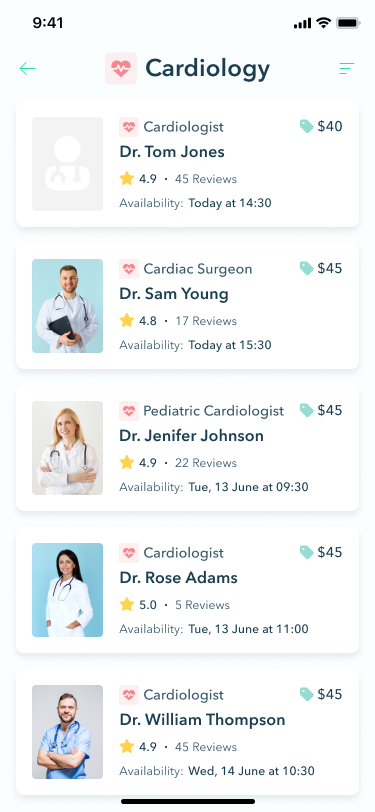
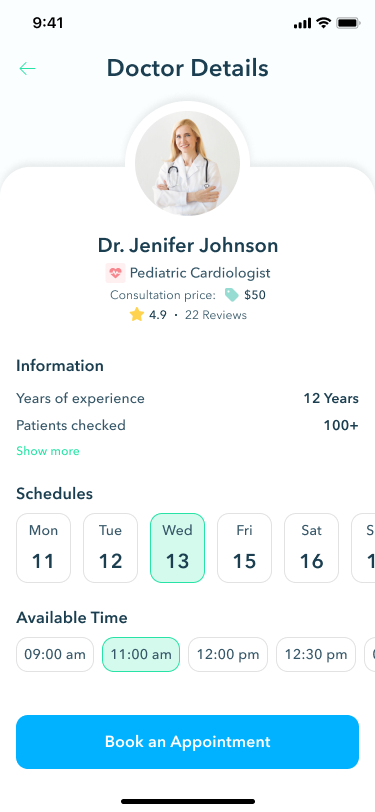
Telemedicine app by Perpetio

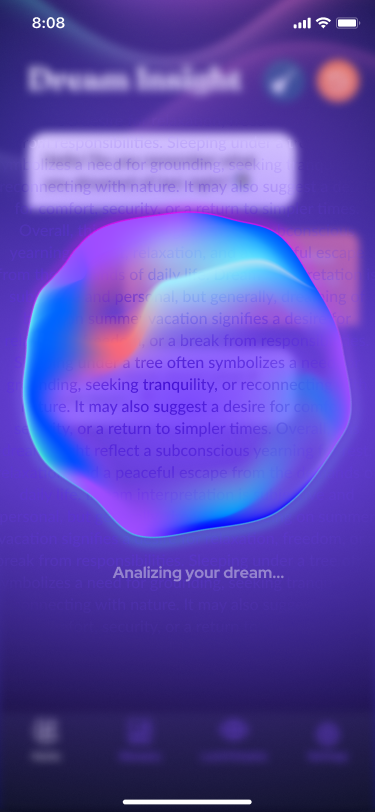
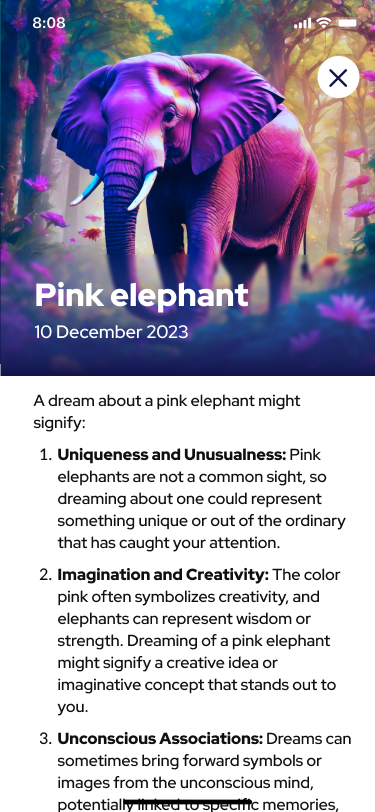
AI-based dream interpretation app by Perpetio
Contact us for a free cost estimate, and let's transform your vision into reality!
